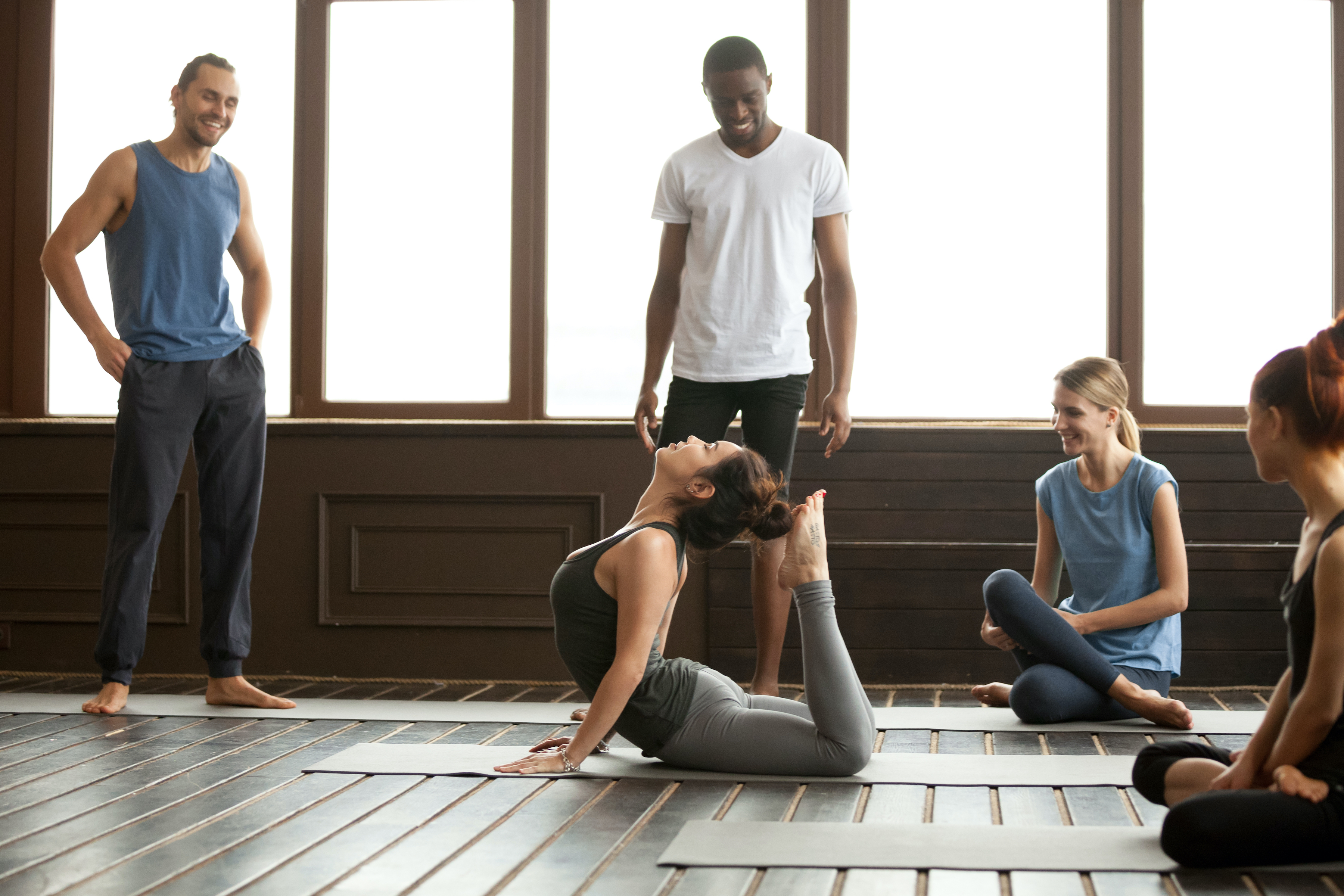
If you teach group yoga classes, you’ve probably been challenged with multiple levels of students all in the same room, especially this time of year when so many yogis and yoginis flock to their mats to fulfill New Year’s resolutions.
With so many different needs, capabilities, and body types it can be a challenge to manage the expectations of a diverse crowd of students.
Just picture it:
You’ve planned a great class ahead of time and the students start trickling into the room you realize that the majority won’t be able to do the class you planned! Do you teach what you planned or ‘wing it’ and hope a spontaneous class will do?
Trick question… The answer is neither!
As yoga professionals it’s important that you come prepared but that you also have the versatility and dexterity to teach a variety of students in a variety of situations.
Here’s how:
1. Have backup classes at the ready
Having a notebook or binder with you where you’ve brainstormed and written down a variety of sequences will help you be ready to respond to your student’s needs on any given day. Organize your binder into sections based on the different classes of asana (backbends, arm balances, twists, laterals, etc) and plan several classes in each category with plenty of beginner and advanced options and variations of the peak poses. Then when you arrive at the studio and need to shift gears, you’ve got an archive of sequences and class plans to choose from!
2. Teach to the majority
Teaching to the majority of the room means that you cater the level of teaching to about 80% of those who are at the same level so that the majority leave feeling empowered, inspired, and challenged. However this doesn’t mean you ignore the 20% minority. You can still make a strong effort to connect with these students and offer them variations or modifications appropriate to their level. For example, you’d want to offer modifications if 80% of the class are more new to the practice, and offer advanced variations if 80% of the class are more seasoned.
3. Not every student will be able to do all the poses, so plan accordingly
Teaching mixed level classes requires skill and an understanding of how to sequence for all different levels. For example, if you frequently teach to peak poses, have your newer students work on repeating the preparatory poses so that they gain strength, flexibility, and body awareness. Those who are ready can go for the peak pose! This way, there is something for everyone.
Pro Tip: Don’t just celebrate the students who get into difficult poses, also celebrate the student’s great alignment in the preparatory poses so that you help to build community and inclusivity.
4. Create a culture of safety in your class
One way to make sure you are serving all levels is to give the power to your students and encourage them to approach you. It’s inevitable that even with the best of planning, you still might not realize that there are some students in the room who are unable or unwilling to do what you’ve asked. Rather than having the pressure to be a mind reader, open up the possibility of a two way conversation, so students feel comfortable stating their needs! For example, give a disclaimer either at the beginning of class or right after you’ve demonstrated a challenging pose and say something like, “We have multiple levels in the room today. If any of the poses I teach are out of your comfort zone and I have not yet given an alternative, I want you to know it is perfectly OK to remind me that you need a more approachable variation—just grab me!”
5. Talk to your students before class
Talking to your students before class is the best way to determine what combination of levels you’ll have in your class, especially if it’s open to all levels. If you have beginners in class take the time to give them a quick crash course on Surya Namaskar, especially Ashtangasana (Knees Chest Chin), Chaturanga, and proper foundation in standing poses.
Remember: You can’t be everything to everyone
It’s impossible to please every single student that steps into your class. Someone may even walk out of your class disappointed, but this has happened to almost every yoga teacher at some point in their career.
That’s not to say you mustn’t try to please eager students. If you want to know what your students want, the simplest thing to do is just ask. Strike up a conversation in the studio lounge, or poll them via your newsletter or with a suggestion box after class to see what the majority of them are craving!
What hacks do you have to help serve multiple levels in yoga class? Leave us a comment below!

